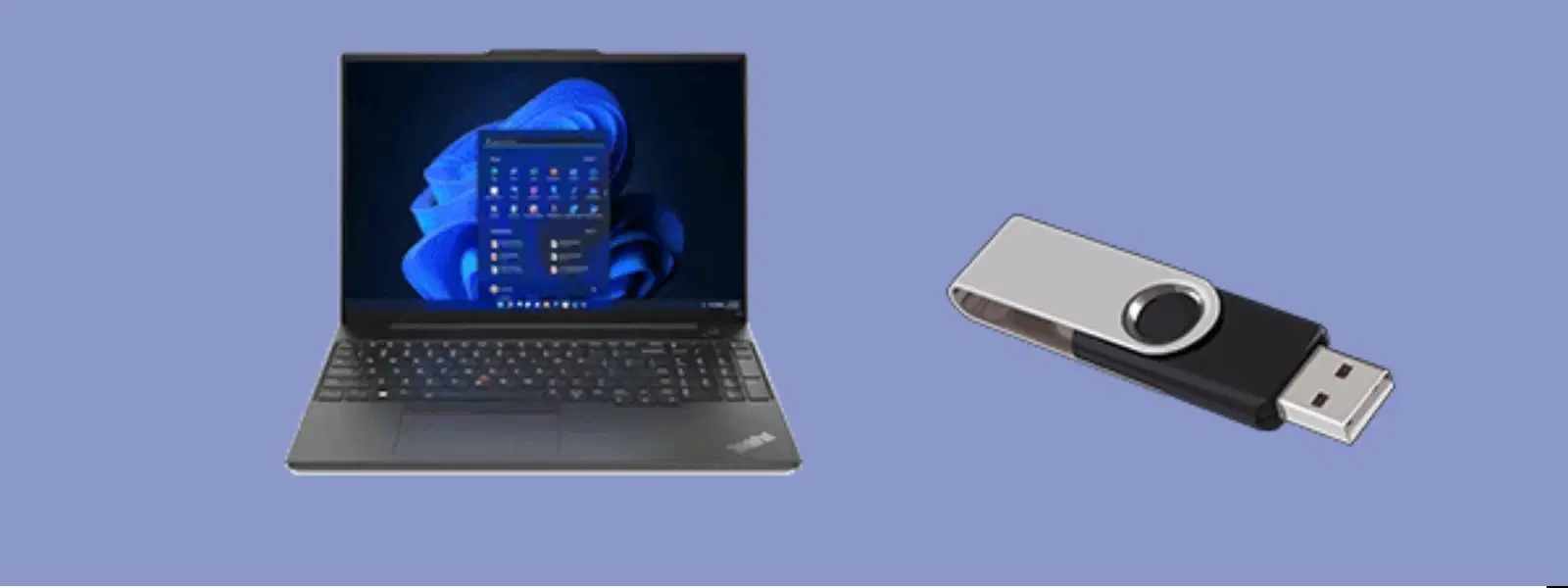
Consumer Electronics
•04 min read
Ever wondered how to boot your Lenovo ThinkPad from a USB drive? Whether you are troubleshooting an issue, installing a new operating system, or running diagnostics, booting from USB can be a lifesaver. This guide offers a clear, FAQ-style approach to help you master the process, ensuring that your device works seamlessly and that you enjoy the additional benefits available on Tata Neu, like the opportunity to earn NeuCoins rewards as you shop smartly.
USB booting is the process of initiating your Lenovo ThinkPad from a USB drive rather than its internal storage. This technique is especially useful for various scenarios such as installing a new operating system, engaging in system recovery after an error, or running portable diagnostic tools without affecting your current system settings. It opens a pathway to a host of possibilities that make troubleshooting and system upgrades much more manageable.
Your device’s boot menu plays a pivotal role when it comes to booting from an external drive. The lenovo thinkpad boot menu is designed to allow you to select your preferred boot device temporarily, ensuring that you can navigate directly to your USB drive if needed. Understanding this menu is the first step toward tapping into advanced system functionalities with ease.
Before you can boot from USB, you must ensure your drive is properly prepared. Creating a bootable USB drive involves formatting the drive correctly and loading it with the necessary bootable files. Tools such as Ventoy or the Media Creation Tool can help you craft a reliable bootable USB tailored for your requirements. This procedure is often referred to as the usb boot setup lenovo laptop, and getting it right is crucial for a smooth boot experience.
An essential part of the process involves accessing the BIOS settings of your Lenovo ThinkPad. Typically, you can enter BIOS by pressing either the F1 or F2 key during startup, though this might slightly vary by model. Understanding how to access bios on lenovo thinkpad is fundamental because these settings allow you to modify boot options and ensure that your system recognises your USB drive as a valid bootable device.
Once in the BIOS, the next step is to enable the option for USB boot. Navigate to the USB configuration section of your BIOS settings and turn on the USB boot feature. Make sure this is saved before you exit the BIOS. This step, often known as enable usb boot lenovo thinkpad, is critical to ensuring your Lenovo ThinkPad recognises the external drive on start-up.
After enabling the USB boot option, it is important to adjust the boot order so that your Lenovo ThinkPad checks the USB drive before the internal drive. This reordering, sometimes described as change boot order lenovo laptop, guides the device to boot from the USB drive first if it is available. Carefully follow the instructions on your screen to move the USB drive to the top of the boot priority list.
In addition to changing the boot order, exploring your device’s other startup options can provide further control over the booting process. By understanding lenovo thinkpad startup options, you can easily switch between various boot modes and select the device you wish to boot from without making permanent changes to your BIOS settings. This flexibility ensures that you are equipped to handle any critical tasks that may arise.
Even a well-prepared system might encounter issues during the USB boot process. Common problems include the USB drive not being recognised, the incorrect boot order being set, or even the presence of corrupted boot files. When facing these challenges, revisit your BIOS settings and check that all configurations have been applied correctly. The process of troubleshooting usb boot on lenovo thinkpad often requires reformatting your USB drive or ensuring that you have the correct bootable files on it.
If you experience difficulties, keeping some troubleshooting tips in mind can save you time and effort. Double-check that your BIOS settings have been correctly applied and that the USB drive itself is free from issues. Trying different USB ports can sometimes make a difference, and it is always beneficial to confirm that your bootable media is intact using recognised tools. These usb boot troubleshooting tips are designed to guide you through resolving common issues patiently and effectively.
Pro Tip: Double-Check Your Bootable USB Drive
Before attempting to boot from USB on your Lenovo ThinkPad, ensure your USB drive is properly formatted and contains the correct bootable files. Tools like Ventoy or the Media Creation Tool can make this process seamless.
Ensure your USB drive is properly formatted and contains the necessary bootable files. Access the BIOS settings, enable the USB boot option, and adjust the boot order to prioritise the USB drive.
Press the appropriate key, usually F12, during startup to access the Boot Menu on your Lenovo ThinkPad, allowing you to select the USB drive as the boot device.
Within the BIOS, locate the section for USB configuration and make sure that all USB ports are enabled so that the device can recognise your bootable drive.
To force the BIOS to boot from a USB drive, adjust the boot order to place the USB drive at the top of the priority list or use the Boot Menu to manually select the USB drive during startup.
This guide has provided a thorough overview of how to boot your Lenovo ThinkPad from a USB drive by addressing key elements such as understanding the process, preparing a bootable drive, modifying BIOS settings, and troubleshooting common issues. The advice provided is both practical and easy to follow, ensuring that even those new to the process feel confident. By following these steps, you can enjoy a smooth USB boot experience supported by Tata Neu's commitment to customer-first service and technology-enabled efficiency. Explore additional resources and informative guides to further empower your tech endeavours and continue enjoying the trust and rewards offered by Tata Neu.